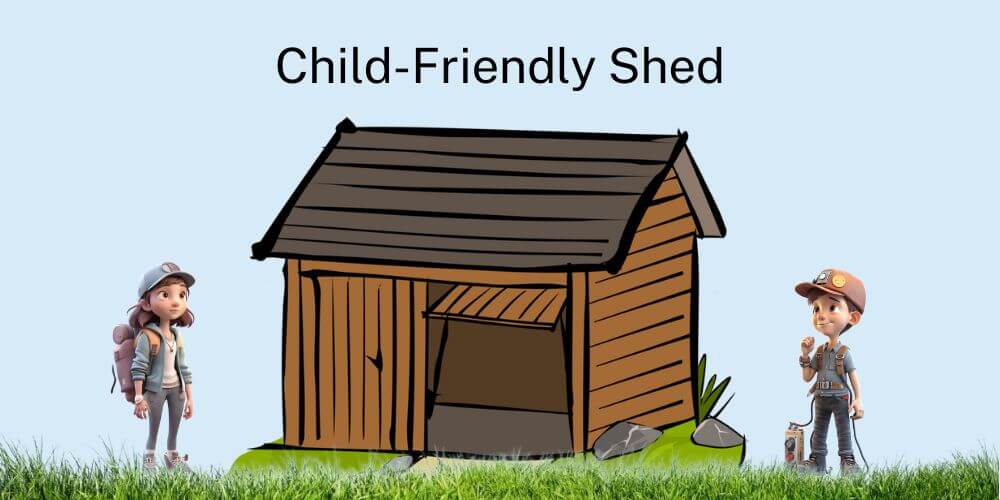How to Level the Ground for a Shed? If you’re planning to build a shed, one of the most important steps is to level the ground where the shed will sit. Building a shed on uneven ground can result in structural problems and a shorter lifespan for your shed. Here’s what you need to know to level the ground for a shed.
Level the Ground for a Shed – Does and Don’ts
There are several things to keep in mind when you’re leveling the ground for a shed. Here are some important dos and don’ts:
Dos
- Use a long, straight board or level to check the ground for high and low spots.
- Remove any rocks, sticks, or other debris from the area where the shed will sit.
- Add or remove soil as needed to create a level surface.
- Compact the soil to create a solid foundation for the shed.
Don’ts
- Build a shed on a slope without first leveling the ground.
- Ignore high or low spots in the ground.
- Build a shed on soft, wet, or sandy soil without first compacting the soil.
Level the Ground for a Shed – Steps
Clear the Area
Start by removing any grass, weeds, rocks, or debris from the area where the shed will sit. Use a rake or shovel to clear the ground completely.
Check for High and Low Spots
Use a long, straight board or level to check the ground for high and low spots. Place the board or level on the ground and look for gaps between the board and the ground. This will help you identify areas that need to be filled in or dug out.
Fill or Dig as Needed
Use a shovel to add soil to low spots in the ground. Alternatively, you can use a rake to remove soil from high spots in the ground. Keep checking the ground with the board or level to ensure that it remains level.
Compact the Soil
Once the ground is level, use a plate compactor or a hand tamper to compact the soil. This will help create a solid foundation for the shed.
Add a Layer of Gravel
To further ensure that the shed stays level, you can add a layer of gravel on top of the compacted soil. This will provide a stable base for the shed.
Level the Ground for a Shed – Consequences of not levelling
If you fail to level the ground correctly before building a shed, you may face several issues that can cause significant problems down the road. Some of the common consequences of not leveling the ground for a shed are:
Uneven settling of the shed: If the shed is built on uneven ground, it can result in an uneven settling of the structure over time. This can cause the shed to become lopsided or twisted, and it may also lead to issues with the doors and windows.
Warped or twisted walls: When the ground is not level, the weight of the shed is not distributed evenly across the foundation, causing the walls to become warped or twisted. This can result in an unstable structure that is more susceptible to damage from wind, rain, or snow.
Doors and windows that don’t close properly: Uneven settling and warped walls can cause the doors and windows of the shed to become misaligned, making them difficult to close or open. This can also result in gaps or cracks that allow water or pests to enter the shed.
Leaks in the roof: If the ground is not level, it can cause the shed’s roof to become unlevel as well, leading to leaks and water damage. This can result in damage to the contents of the shed, as well as the shed’s structure itself.
Cracks in the foundation: Uneven settling can also cause cracks to form in the foundation of the shed, which can compromise the structure’s stability. Cracks can also allow water to seep into the foundation, causing further damage. Click here to check the types of shed bases.
A shorter lifespan for the shed: All of these issues can lead to a shorter lifespan for the shed overall. The shed may become unstable, and it may require costly repairs or even replacement much sooner than if it had been built on level ground.
Level the Ground for a Shed – Final Thoughts
Leveling the ground for a shed may seem like a time-consuming task, but it’s a crucial step that should not be skipped. By taking the time to level the ground properly, you’ll ensure that your shed is stable, secure, and built to last. Remember to use a long, straight board or level to check for high and low spots, remove any rocks or debris from the area, add or remove soil as needed, compact the soil, and consider adding a layer of gravel for extra stability. By following these steps, you’ll be well on your way to building a shed that will stand the test of time.



